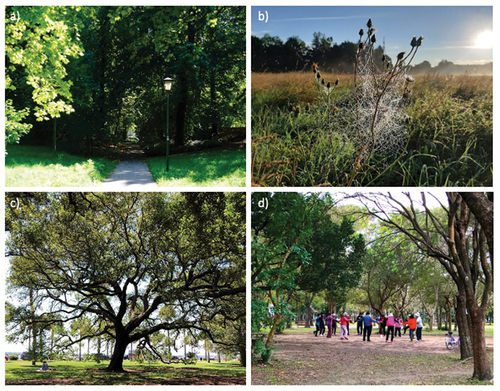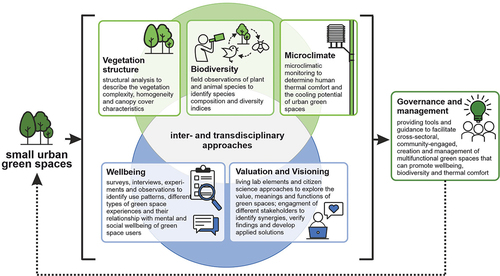Figures & data
Figure 1. Urban green spaces are important for: climate change mitigation through shading and vegetation structural complexity (a: Hans-Fischer-Straße Park in Munich, Germany); biodiversity of plants and animals, arthropods and birds (b: spider web in field in Taxispark in Munich, Germany); and human health and wellbeing through stress release and restoration (c: woman sitting under the shade of a tree in Charleston, USA), and through and recreation and socializing (d: group meeting for Tai Chi exercises in a park in Taipei, Taiwan). Photo credits: Sophie Arzberger (a), Vera Knill (b), and Monika Egerer (c, b).

Figure 2. Small urban green spaces must be examined from diverse perspectives including from ecology and conservation, climatology, environmental psychology, public health and participatory research to in turn inform governance and management at the local neighborhood level and the city planning level. In our research in Munich, Germany, we use inter- and transdisciplinary approaches and illustrate how ways of combined data collection from natural and social sciences, enriched with participatory formats can provide guiding tools relevant to stakeholders across different sectors. Graphic by Sophie Arzberger.

